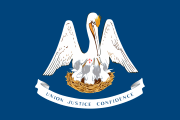|
18th-century figures
19th-century figures
20th-century figures
|
||
|
18th-century figures
19th-century figures
20th-century figures
|
||
|
|
||
|
|
||
|
|
18th-century figures
19th-century figures
20th-century figures
|
|
|
18th-century figures
19th-century figures
20th-century figures
|
||
|
|
|
|
|
|
|
|
|
|
||
|
|
||
|
|
18th-century figures
19th-century figures
20th-century figures
|
|
|
18th-century figures
19th-century figures
20th-century figures
|
||
|
|
|
|
|
|
||
|
|
18th-century figures
19th-century figures
20th-century figures
|
|
|
18th-century figures
19th-century figures
20th-century figures
|
||
|
|
|
|
|
18th-century figures
19th-century figures
20th-century figures
|
||
|
18th-century figures
19th-century figures
20th-century figures
|
||
|
|
||
|
|
||
|
|
18th-century figures
19th-century figures
20th-century figures
|
|
|
18th-century figures
19th-century figures
20th-century figures
|
||
|
|
|
|
|
||
|
|
|
|
|
|
Landmarks and monuments
Landmarks
Monuments
|
|
|
Landmarks and monuments
Landmarks
Monuments
|
||
|
|
|
|
|
18th-century figures
19th-century figures
20th-century figures
|
||
|
18th-century figures
19th-century figures
20th-century figures
|
||
|
||
|
||
|
||
|
||
|
|
||
|
|
||
|
|
|
|
|
|
|
|
|
|
|
|
|
|
|
|
|
|
||
|
|
|
|
|
|
||
|
|
||
|
|
||
|
|
||
|
|
|
|
|
|
|
|
|
|
Basic economic principles
Supply and demand
Shortage and surplus
|
|
|
Basic economic principles
Supply and demand
Shortage and surplus
|
||
|
|
|
|
|
|
||
|
|
|
|
|
Land features
Types of neighborhoods
Major U.S. cities
States and capitals of the West
States and capitals of the Midwest
States and capitals of the Southeast
States and capitals of the Northeast
50 states
State capitals
|
||
|
Land features
Types of neighborhoods
Major U.S. cities
States and capitals of the West
States and capitals of the Midwest
States and capitals of the Southeast
States and capitals of the Northeast
50 states
State capitals
|
||
|
Identify land features
|
||
|
Identify land features
|
||
|
|
||
|
|
||
|
New England colonies
Middle colonies
Southern colonies
The Antebellum Period
|
||
|
New England colonies
Middle colonies
Southern colonies
The Antebellum Period
|
||
